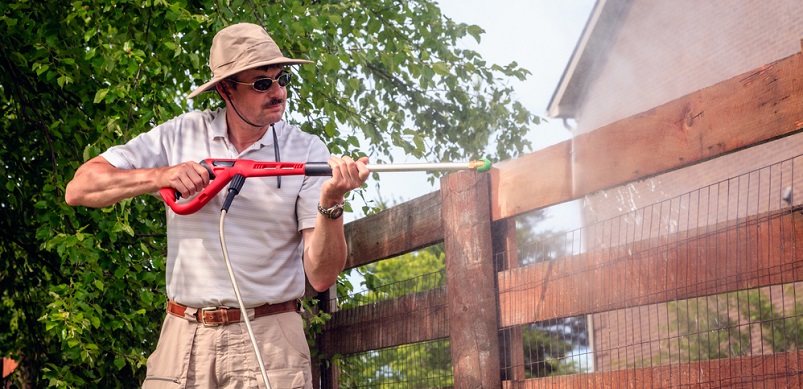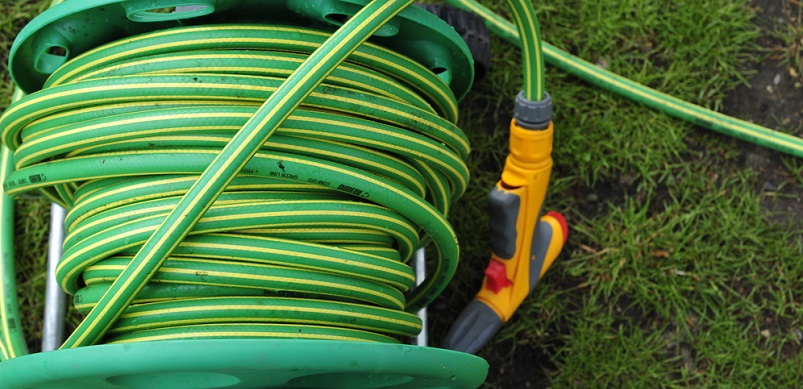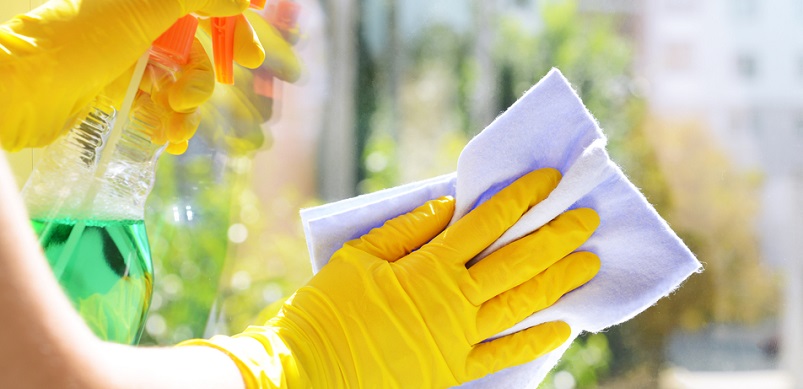
The dos and don'ts to take heed of when using your pressure washer
July 15, 2022 | Pressure Washer Maintenance, Tips & Advice | No comments
Pressure washers can be a magnificent tool when it comes to cleaning your patio, your car, your paving or any other area outside your home. But if you’re new to pressure washing, just hold on a moment before you get trigger happy! There are a few things you might want to know…
While they might seem like a fairly simple tool to use, there are some common errors that should be avoided before you start blasting water all over the place. Here are some pressure washer dos and don’ts to help you avoid unwanted errors and get the best out of your appliance!
Do… watch the power!

It’s important to know just how much power you’re going to need for your cleaning jobs at hand. After all, the last thing you want is to use a high-powered pressure washer on your garden furniture, only to tear your favourite cushions to shreds! Fortunately, pressure washer power can be measured in PSI (pounds per square inch) so this is something you can determine beforehand. For example, 1000-2000 PSI is safe for use on your car, whereas 3000+ can be used for paint stripping. Do your research and make sure you have the right amount of power for the cleaning tasks ahead!
Don’t… bend the hose!

We know, we know… it’s far easier to simply fold up your hose and cast it aside. But just because something is easier, doesn’t mean it’s the right thing to do! Once your coil is kinked or bent, it’ll weaken its spraying power, and once this happens there’s no coming back from it. Instead, invest in a pressure washer hose reel and make sure you’re putting your hose away safely after every use. It’ll save you a fair amount of dosh on replacing hoses time and time again in the long run.
Do… research your hoses!

On the topic of hoses, it’s always a good idea to make sure you have one that’s best suited to your spraying chores and outdoor areas. For example, if you have a large house with plenty of areas that need cleaning, a longer hose will be convenient as it will allow you to manoeuvre back and forth with ease. The same goes for the material. If you’re going to be turning around lots of corners, a hardy plastic hose will help you do so without riddling your hose with unwanted kinks and bends. Then there are rubber hoses which are both heavier and more flexible, but can leave black markings on concrete and therefore should be avoided if you have lots of concrete paving outside your home.
Don’t… wash windows!

Even though washing windows with a pressure washer is a fairly common practice, it’s actually one that should be avoided wherever possible. Pressure washers can often be too powerful for windows, and the result can be unwanted cracks or even completely shattering the glass. As such, avoid using your pressure washer to wash windows and opt for a sponge and bucket of soapy water instead. It may take a little longer, but it’s better than forking out a small fortune to replace your broken windows!
Do… use the right nozzles!

Making sure you use appropriate nozzles can play a huge role in how effectively (and safely!) you use your pressure washer. That’s why it’s important to know your nozzles and use them for the correct purposes. Fortunately, pressure washer nozzles are often colour coded, making it easier to know how much power each one will provide. A red nozzle will generally provide a thin, powerful blast of water that’s ideal for use on concrete, brick and so on. On the other end of the spectrum there are blue nozzles, which provide a wide and less powerful spray that’s great for your car, fencing and other less heavy-duty areas. So next time you’re about to start spraying your patio, make sure you aren’t using a nozzle that’s going to blast its paint to smithereens!
Don’t… store carelessly!

Finally, make sure that when you’re finished with your pressure washer, you don’t store it away carelessly and haphazardly. This includes rolling the hose up properly to avoid kinks and bends (as mentioned earlier) and also emptying the hose out of any water before storing it for winter. Otherwise, water can freeze inside the hose, causing it to expand and become damaged. Making sure your appliance is fully cleaned and neatly stored away in a safe place can work wonders in keeping it in working order for years yet to come!
Hopefully, you found our dos and don’t of pressure washing helpful. While you’re here, why not also check out our blog post on 6 tedious chores made simple with your pressure washer? Those outdoor cleaning tasks will be easier than ever in no time!
Tags: Pressure Washer, Pressure Washer Advice, Pressure Washer Maintenance, Pressure Washer Tips

